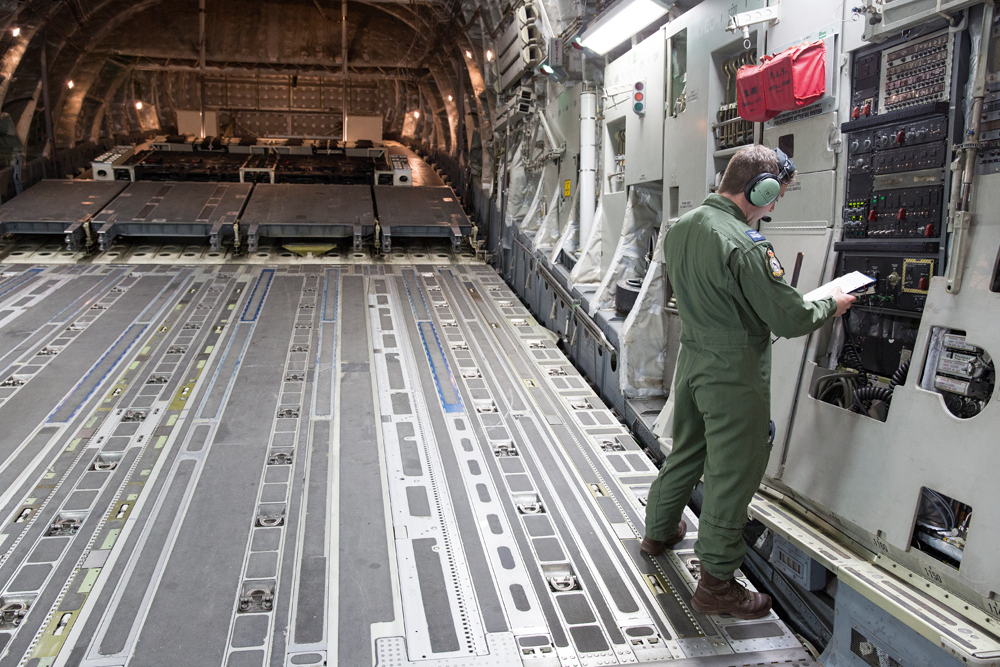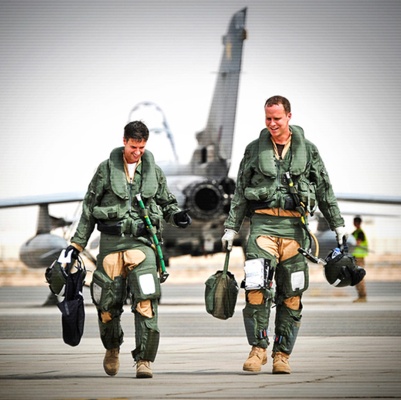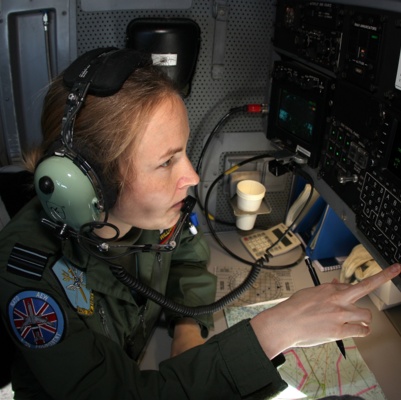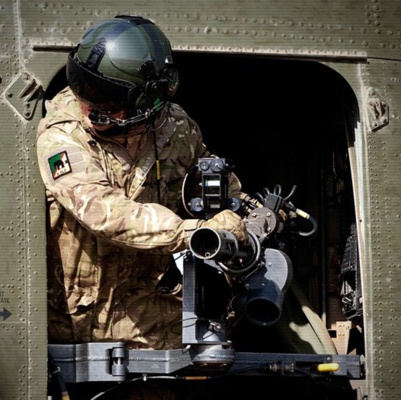About the Globemaster (C-17)
ROLE
The C-17 Globemaster III (Globemaster C-17) is a longrange, heavy-lift strategic transport aircraft that can operate close to a potential area of operations for combat, peacekeeping or humanitarian missions worldwide.
CAPABILITY
C-17 is capable of rapid, strategic delivery of troops and all types of cargo to main operating bases anywhere in the world. The Globemaster’s load-bearing rear ramp and digitally controlled loading systems, combined with the skills of its crews and ground handlers, enable large, complex items of equipment, including Chinook helicopters, military vehicles and other heavy items of specialist kit to be loaded.
It can transport 100,000lb (45,360kg) of freight more than 4,500nm (8,334km) while flying at altitudes above 35,000ft. The aircraft’s design enables high-angle, steep approaches at relatively slow speeds, allowing it to operate into small, austere airfields and onto runways as short as 3,500ft long and just 90ft wide.

Image by: SAC Cathy Sharples
TYPE HISTORY
The Royal Air Force had been without an organic outsize strategic lift capability since the Short Belfast was withdrawn in 1976, relying, ironically, on civilian operated Belfasts for the movement of such loads during the 1982 Falklands War and making use of chartered freighters.
By the end of the 1990s it had become clear that this capability gap ought to be filled, and in 2000 the Ministry of Defence (MoD) agreed a seven-year ‘lease and support’ contract with Boeing and the US Air Force (USAF) for four C-17A Globemaster III (Globemaster C-17) strategic transports.
On August 28, 1981, the USAF had chosen the McDonnell Douglas C-17 as winner of its C-X competition for a new military transport aircraft primarily to replace the Lockheed C-141 StarLifter. The C-17’s development process was less than straightforward, however, a complex and changing procurement schedule delaying first flight until September 15, 1991. Internal manoeuvrings at McDonnell Douglas further complicated the programme as C-17 responsibility moved between divisions and although the 1993 first delivery to an operational USAF unit was from the original manufacturer, in 1997 the C-17 became a Boeing product on the latter’s acquisition of its rival.
The C-17A had become the Globemaster III on February 5, 1993, following on from the USAF’s Douglas C-74 Globemaster and C-124 Globemaster II post-war piston-engined transports. By the time the UK defined its initial C-17 requirement the type was well established in service and the RAF benefitted from access to the global C-17 support network and supply chain. In UK service, the type is typically referred to as C-17 or Globemaster, no formal RAF role/numerical designation (Globemaster C.Mk 1 would have followed the regular pattern of aircraft titles) being applied, since the aircraft was initially leased.
Number 99 Squadron reformed at RAF Brize Norton to operate the aircraft, which rapidly became a stalwart and key enabler of the airbridge operation that sustained UK operations in Afghanistan. Even at the peak of Operation Herrick, however, the C-17 serviced humanitarian and operational commitments elsewhere and rather than taking an option to extend the C-17 lease by two years, the MoD bought the initial four aircraft and ordered a fifth in 2006.
Continued demand saw a sixth ordered in 2007, a seventh in 2009 and the eighth and, to date, final example in 2012. The latter was ordered and delivered within weeks at a reported cost of £200 million according to an MoD press statement.
With the end of Herrick, 99 Squadron has continued flying many of the types of mission in which the C-17 excelled during the operation, moving personnel and equipment, and performing aeromedical evacuation missions with a suite of surgical facilities and staff on board. Support to deployed operations remains as important as ever and RAF C-17s are regular visitors to allied forward bases, particularly in connection with French anti-terrorist work in Africa.
Humanitarian flights, typically planned and flown wherever needed at very short notice, are common 99 Squadron trade, while the fact remains that when a C-17 taxies onto an airfield ramp anywhere in the world, with the Union Jack painted large on its side, there can be no doubt that UK interests are involved.
May 2021 marked two decades since the first Globemaster (C-17A) arrived at RAF Brize Norton.
In 2022, a Globemaster carried the body of Her Majesty Queen Elizabeth II from Edinburgh to RAF Northolt ahead of the sovereign’s state funeral in London.
Specifications
Boeing C-17A Globemaster III (Globemaster C-17):
- Powerplant four 40,400lb st (179.90kN) Pratt & Whitney F117-PW-100 turbofans
- Length overall: 174ft (53.04m)
- Height overall: 55ft 1in (16.79m)
- Wingspan: 169ft 9in (51.74m)
- Wing area: 3,800sqft (353.03m2)
- Maximum take-off weight: 585,000lb (265,350kg)
- Cruising speed at 28,000ft: 450kt (833km/h)
- Range with 100,000lb (45,360kg) payload: more than 4,500nm (8,334km)
- Service ceiling: 45,000ft
- Maximum payload (2.5g load factor): 169,000lb (76,655kg)









